Patient Loyalty: How To Turn New Patients into Lifelong Customers
If building long-lasting relationships with your patients is a top priority for your practice, you will want to improve patient loyalty by working on your patient engagement and experience.
Creating an effective loyalty strategy can produce personalized experiences for patients that will establish deeper connections between patients and your practice and instill lasting confidence which improves not only the likelihood of retention, but also word-of-mouth referrals.
Dr. Gerda Maissel [1] is a Board Certified Patient Advocate (BPCA) and Board Certified Physical Medicine and Rehabilitation (PM&R) physician with over 30 years of experience. She has shared with us some of the strategies that she found most useful for improving patient loyalty during her years managing a healthcare organization.
Dr. Gerda Maissel
What is patient loyalty?
Patient loyalty is the metric by which you measure how likely a patient is to stick with your practice or healthcare organization throughout the years. It can be a measure of patient retention or a statistic about how likely a patient is to recommend your practice to friends and family.
Challenges of maintaining patient loyalty
According to our 2022 Software Advice Patient Experience Survey*, most patients don’t feel a sense of loyalty to their doctors. In fact, a majority of patients have sought a new provider after just one negative experience.
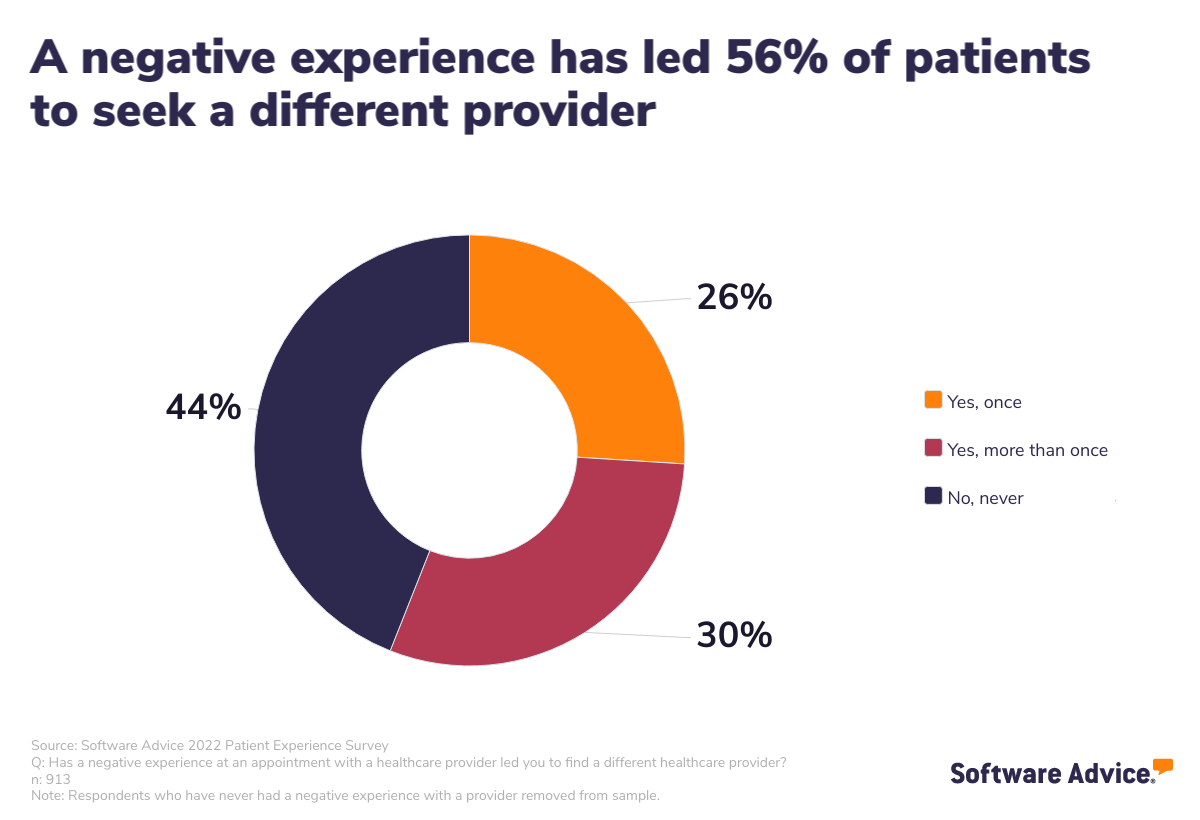
Because of the rising cost of healthcare as well as the increasing commodification of the healthcare industry, patients are more disengaged and jaded with the healthcare system than ever before.
Additionally, practice owners face a number of challenges that are pulling their patients away from their practices. For instance, according to Software Advice's 2023 Independent Practice Survey**, 55% of patients switched primary care providers because they found a more convenient solution.
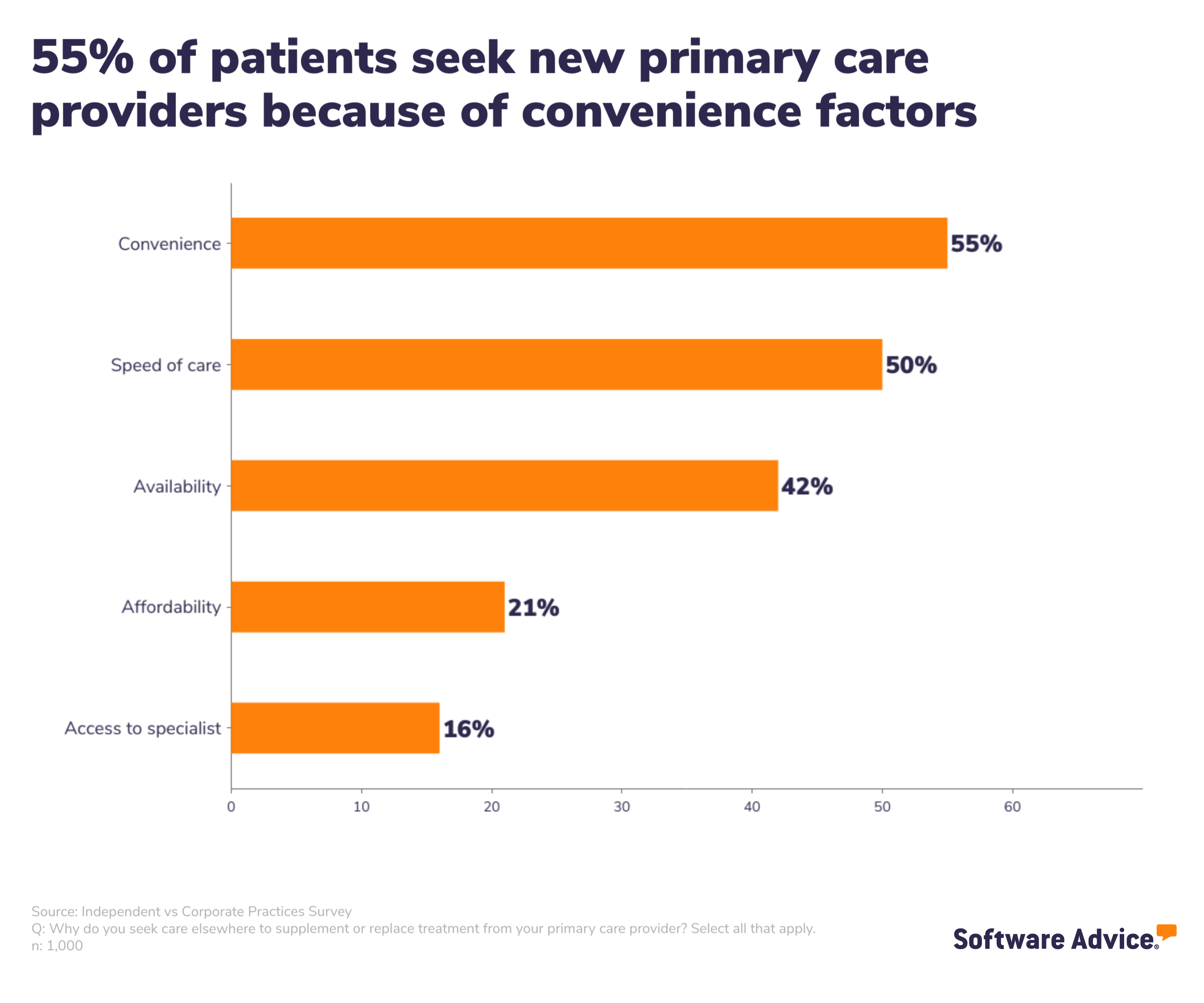
The survey also found that speed of care, availability, and affordability all contributed to patients leaving a primary care provider. All of these factors can be addressed at your practice with the implementation of patient loyalty strategies.
If you don’t give your patients a reason to remain with your practice, they’re likely going to leave to find a different healthcare provider the minute they have a negative experience or find more convenient or speedy care. Additionally, the likelihood that they are going to tell their friends and family about the negative experience will increase, hurting your ability to gather new patients.
Strategy #1: Improve patient intake
Start your patients off on the right foot by streamlining your patient intake. Remove unnecessary questions that aren’t relevant to onboarding your patients (even if it would be nice for you to have).
Use patient intake software to streamline the process for your patients so that they can fill out relevant patient information before they come to your office for the first time.
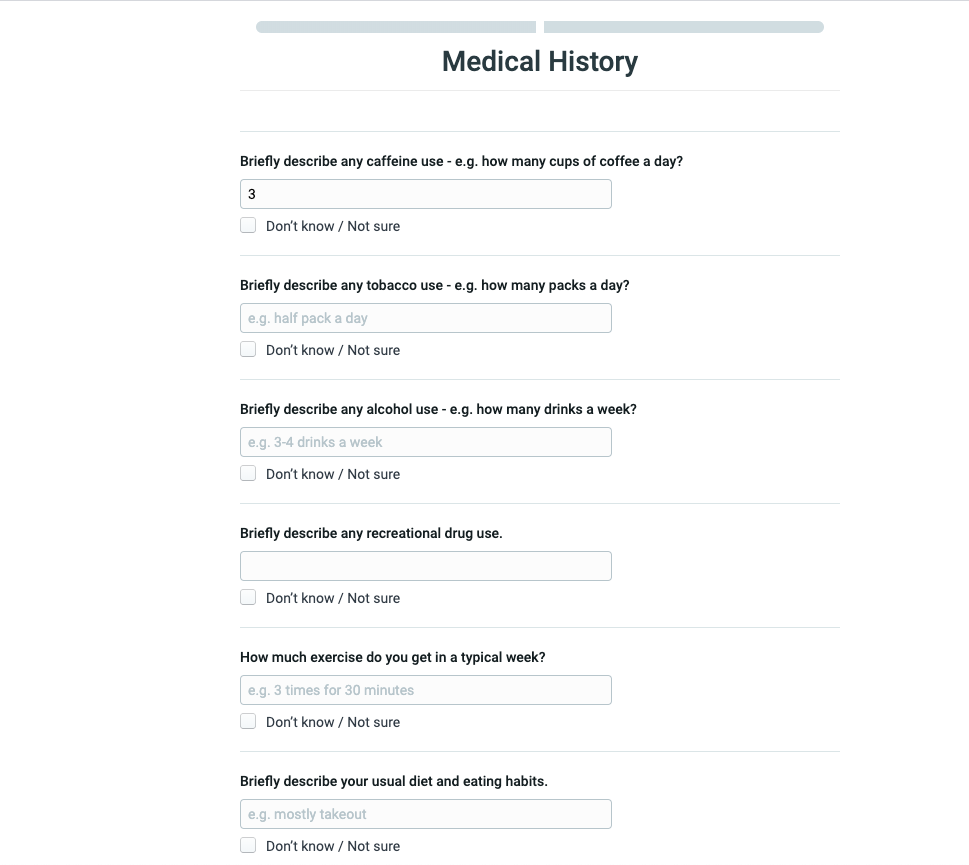
Customizable patient intake form creator in patient intake software (Source)
Ask how your patients want to be messaged and follow through with that preference. If they lean toward phone calls, make sure you call them to remind them of their appointments. If they want to be emailed, email them. Same is true for texting.
On your patient intake form, have a section where patients can select their preferred channel from a comprehensive list which might include options such as:
Email
Text
Phone
Patient portals
Social media
WhatsApp
Written mail
Once you have this information in your electronic health record (EHR) system, it’s crucial that you train your staff to follow through and only contact each patient given their preferred method of communication. Failing to do so will hurt your ongoing efforts to improve patient loyalty because it will show your patients that you don’t value their preferences.
Pro tip
If you’re auditing your patient intake form or creating a new one, have friends and family fill it out and gather feedback about what they consider necessary or unnecessary. You can also look at patient intake forms from other practices or healthcare organizations.
Strategy #2: Develop and distribute patient engagement and loyalty surveys
Distribute patient loyalty and engagement surveys to kill two birds with one stone. One of the only ways that you can reliably get patient loyalty metrics is by asking how likely they are to recommend your practice to other people.
Distribute your surveys in the manner in which your patients want to be communicated with. If your patient selected email as their preferred method of communication, send the patient survey over email. If they prefer text messages, send it via SMS.
Remember, satisfied patients are usually loyal patients. If your patient is engaged and happy with the service they receive, they’re more likely to complete all necessary check-ups, follow-ups, and any other appointments that are required of them. Not to mention that satisfied patients are great for word of mouth since they are more likely to recommend your healthcare organization to friends and family.
Survey software allows you to create and distribute secure surveys while also gathering real-time results so that you can determine the effectiveness of your surveys and make changes quickly. Additionally, many of these software tools allow you to dissect the information as needed. For example, you might be able to split your respondents into more useful categories, such as age/demographic/job type/location.
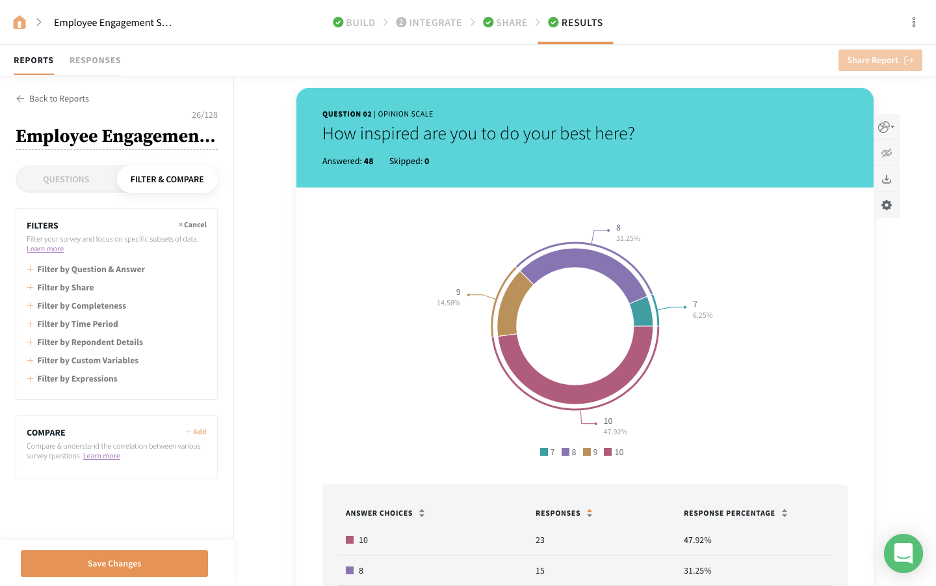
An example of survey software data visualization (Source)
For more information about the importance of conducting patient satisfaction and engagement surveys as well as access to a free-to-use template, check out Patient Satisfaction Survey Examples To Improve the Patient Experience.
Act on your patient satisfaction survey data
According to our Software Advice 2022 Patient Experience Survey*, 58% of patients say they have received patient satisfaction surveys after visiting a healthcare provider within the past three years. However, 63% of those who say yes to receiving them also say they feel that their healthcare provider doesn’t take their responses into account or make any changes as a result of those surveys.
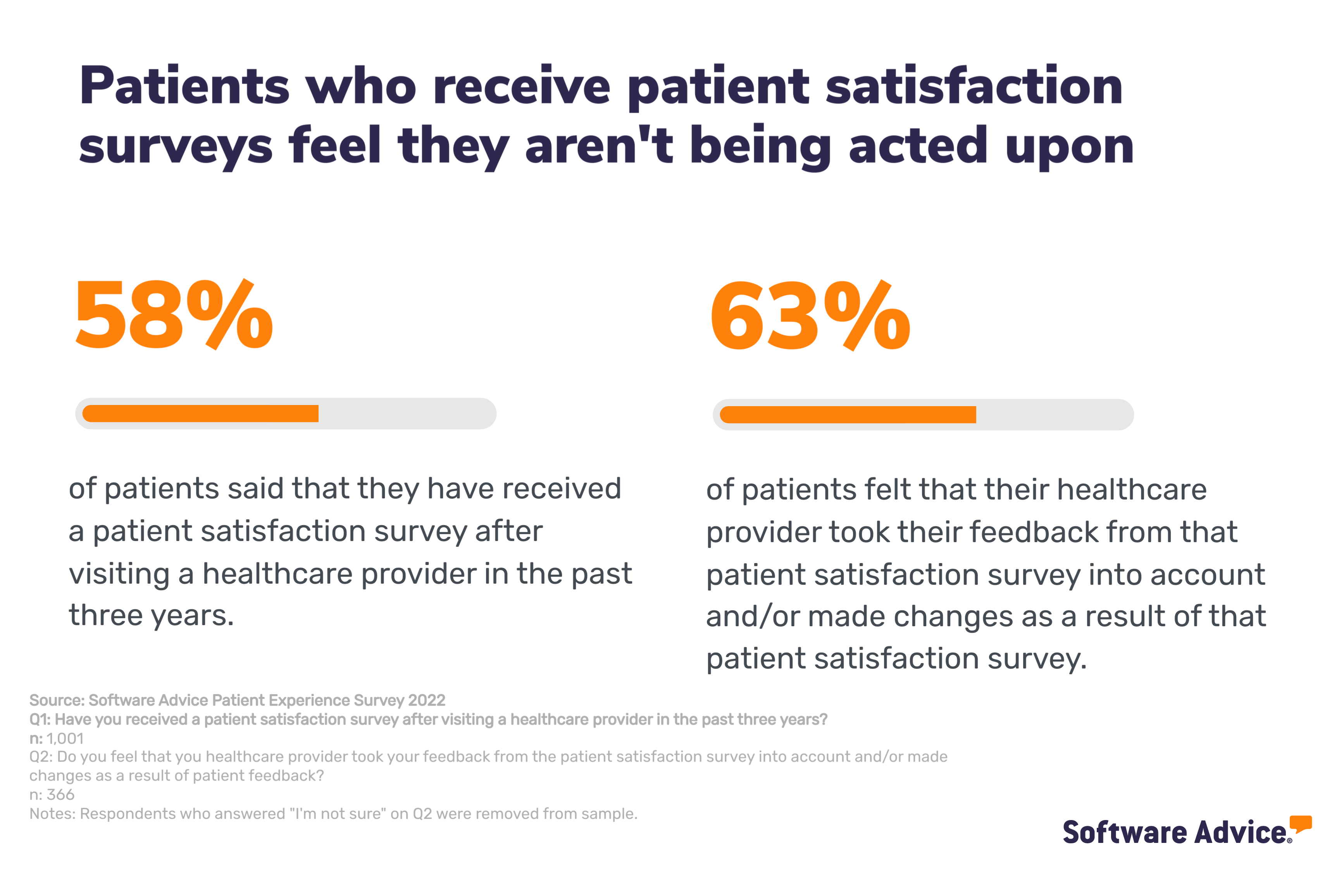
This indicates that even if doctors are sending patient satisfaction surveys out, the patient sentiment and perception hasn’t been improved.
Remember that patient retention isn’t always the best metric to measure patient loyalty. There are too many different variables that go into a patient leaving your practice to know that it was because they weren’t engaged or satisfied with the service you provide. They might be moving, they might have switched insurance, etc. Additionally, if you’re a surgeon, you aren’t going to have the same retention rate as primary care physicians.
Pro tip
When you run patient surveys, take the results seriously. If you’re finding that your patients think scheduling is confusing, you need to address that pain point by going through the scheduling flow as a new and recurring patient. Is the option to schedule an appointment readily available on your website in an easy-to-find location? If they don’t want to schedule online, is your number easily accessible for them to call to schedule? Do you send automated reminder texts or emails? Can they schedule through the patient portal? You can audit each and every one of your processes like this based on your patient satisfaction survey results.
Strategy #3: Train staff to actively engage with your patients
It’s important to remember to see your patients as people and not just an impediment that you have to deal with in order to get to lunch.
Dr. Maissel reiterates the importance of having an empathetic staff: “There's nothing like going to a practice ten times, seeing the same clerk, and knowing that clerk has no clue who you are.”
Patients are going out of their way to come to your office. They have to secure time off work and transportation. They might be nervous about visiting because they’re worried about their health. So it’s important to remember that even though this is your 50th or 100th time checking in a patient, it’s a huge chunk of their day that’s outside of their normal schedule.
Train your staff to ask simple questions about your patients’ personal lives and record those in your EHR so that you can more easily remember them. It’s one of the easiest ways to make the patient feel cared for and improve patient loyalty.
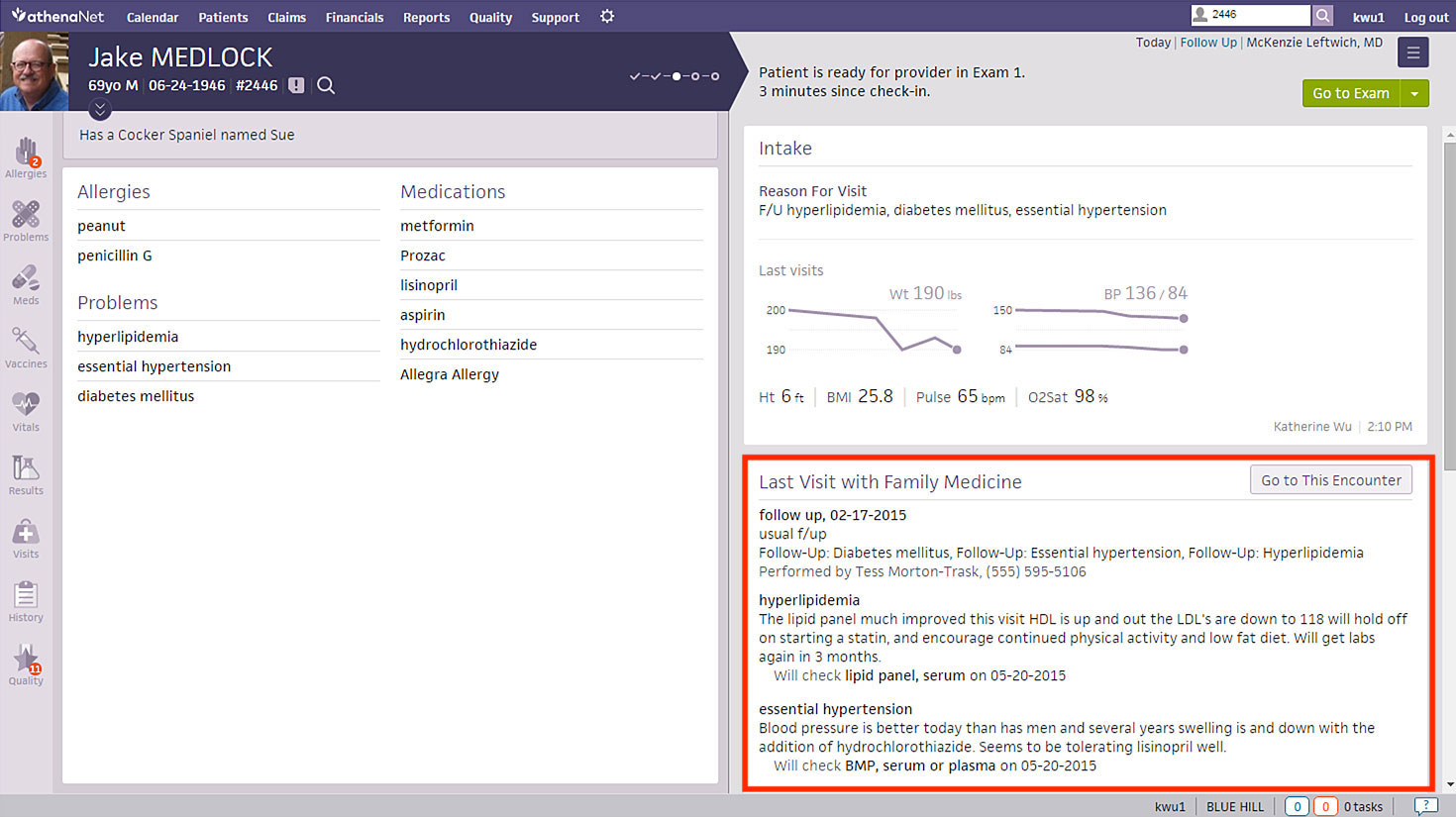
An example of where you might write down personal patient details (Source)
Pro tip
Actively engaging with your patients is a skill, and, like any other skill, it takes practice and training to improve it. Training your staff to take a moment during every patient interaction to empathize and connect with your patient is one of the most crucial ways to improve patient loyalty. After all, a patient who feels like they are just a warm body instead of a person isn’t going to be thrilled if something bad happens; they’re going to complain and likely find another practice.
Strategy #4: Take ownership of mistakes
Mistakes are going to happen; we’re all human after all. The important thing to remember is to take ownership of your mistakes, especially if they’re interpersonal.
Dr. Maissel has some advice for practice administrators: “Apologize and own up not only for what you did, but also apologize if something happened, even if it wasn’t your fault. Saying something as simple as ‘I’m sorry that happened to you. What can we do to help make it better?’ goes a long way in alleviating hurt feelings.”
Patients just want to be heard, and if they have a complaint, taking ownership goes a long way in retaining them and improving patient loyalty.
Pro tip
Actively listen to your patients whenever they have concerns. Don’t just jump in right away to solve their problem. First, take in everything they’re saying, empathize with them, then apologize. Once they feel heard, then you can move forward to find a solution to their problem.
Strategy #5: Limit visual graffiti in your office
One of the less intuitive ways that you can improve patient loyalty is by limiting the visual graffiti in your office.
Visual graffiti results whenever a space is cluttered with too many things on walls, tables, and desks. If a patient walks into your office and sees three signs on a door, handwritten notes taped somewhere, signs about wearing masks, getting prescriptions, joining a support group, etc. they might feel overwhelmed by the clutter.
If, when they’re talking to your staff, they look behind them to see a mess of charts, papers, sticky notes, cups, etc. in the staff area, they might immediately get turned off by your office.
Dr. Maissel discusses the importance of limiting visual graffiti in your waiting room, and particularly in the staff area. “It’s distracting and not professional. It sends a message that you don’t care or are too busy to have a neat workspace. If I was a new patient coming into this space, I might think ‘this place is kind of a dump.’”
Decluttering your waiting room and work space is an easy way to improve the overall look and feel of your office:
It shows you care about your work space
It shows you’re professional
It builds inherent trust right off the bat
It can remove distractions and make people feel less anxious
Pro tip
Hire a patient loyalty evaluation consultant. Patient loyalty consultants will come in and evaluate your patient experience from start to finish and provide you with a comprehensive list of ways you can improve your overall patient experience to improve their loyalty and increase retention. They’ll take a look at how your office is arranged with fresh eyes to better simulate what a new patient might feel whenever they walk in for the first time.
Improving patient loyalty takes work, but the results are worth it
Improving patient loyalty can feel overwhelming when looking at your practice as a whole, which is why it’s so important to break each aspect down individually so you can tackle it in stages:
Make your patient intake process more convenient and thoughtful
Develop and distribute a patient satisfaction survey
Train your staff to be more empathetic and personal
Take ownership of mistakes
Limit visual graffiti in your office
Doing this will make your patients more likely to remain with your practice even if you make a mistake or they have a bad experience which will help increase retention and word of mouth.
Be strategic about how you implement these strategies. Take them one at a time to shore up each part of your patient loyalty strategy to make sure that you can execute them to a level that you’re satisfied with instead of just rolling all of these changes out at once. If you do that, you risk your staff becoming overwhelmed, and unhappy staff members are detrimental to patient loyalty.
For more resources about improving patient engagement and retaining patients, check out these resources:
Survey methodology
* Software Advice's 2022 Patient Experience Survey was conducted online in October 2022 among 1,001 respondents in the U.S. Respondents were all adults who had visited a healthcare provider within the past three years.
**Software Advice's 2023 Independent Practice Survey was conducted in July 2023 among 1,000 patients in the U.S. who had visited a healthcare provider within the past two years. We polled these respondents to understand what types of providers they visited, what their experiences were like with these providers, and what their preferences and expectations are from healthcare providers in general.
Note: The applications shown in this article are examples to show a feature in context and are not intended as endorsements or recommendations.
Note: Interview responses have been edited for brevity and clarity.